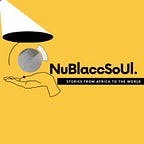All men are equal, but some men are more equal than other men.
Masculinity, in its normative definition, has been unequivocally monopolised by a single sub-culture of men — white, heterosexual, young, Christian and middle-class men (Kimmel 2004:184). This hegemonic intersectional identity that has been on the receiving end of the uneven and unequal distribution of the socio-cultural and political power in society, are the bar measured against for all things ‘manly’’, for the othered men who are in the periphery of the masculine centre particularly, and for women and children in general. The socio-political, cultural and economic institutions that endorse the stereotypical and reductively-monolithic construct of mainstream masculinity, such as that of ideological state apparatuses: mass communication outlets, religious institutions, the education system, societal norms and the repressive state apparatus of the military/police that all collectively produce and reproduce this image of masculinity.
MacInnes (1998:12–13) provides a broader and more nuanced perspective on contemporary masculinity, which explores how qualities that were once considered virtues in a given spatial, political and temporal context, such as apartheid for…
